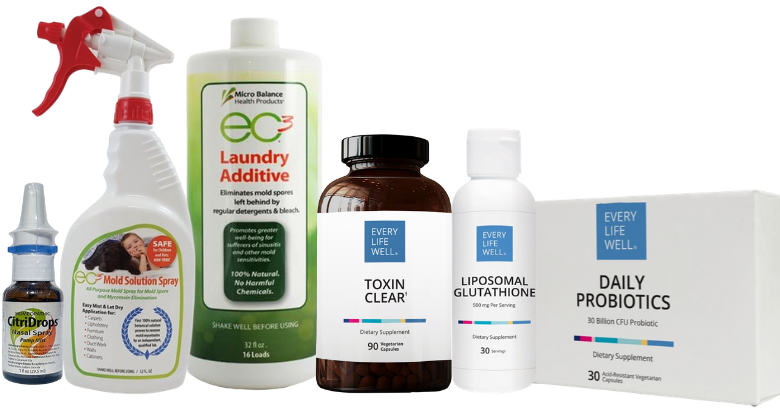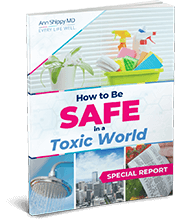How our bodies interact with food is such a complicated and fascinating topic!
In my initial medical training, I received very little education on the complexities of nutrition. As I began practicing medicine in a traditional setting, I had so little time with each patient that we often didn’t discuss the foundations of health that include nutrition, genetics and lifestyle.
I’m so thankful that my path led me to Functional Medicine where I can spend the time to uncover the root cause and go deeper with food. Now, nutrition is one of the most important topics I discuss with every patient.
You may think you have personalized your diet by avoiding the foods to which you are allergic. This is what I used to think, but now I see food allergies as simply the tip of the iceberg. There are many ways that the body can be allergic, sensitive or intolerant to different foods, or components of those foods. When we adjust the diet for healing and truly use food as medicine, results are incredible.
This process of being a diet detective to discover how to create a unique Functional Medicine plan for each patient leads to lower inflammation and a healthier gut! Symptoms throughout the entire body can subside simply by adjusting what we eat.
There is a lot of confusion around food allergies. Often, terms are interchanged or misused. In this article I will go over definitions, examples and provide action steps you can take right away.
Keep reading to learn about:
- The difference between a food allergy, food sensitivity and food intolerance
- A unique allergy: Latex crossover reactions
- A unique sensitivity: Salicylate sensitivity
- A unique intolerance: Histamine intolerance
- Food Allergies
Food allergies are what we typically think of when someone has a reaction to a food, such as a child being allergic to peanuts. The body produces IgE antibodies, and symptoms can be immediate and often severe.
Symptoms can include:
- Swelling of the tongue, lips, mouth and throat
- Mouth itching or tingling
- Wheezing and difficulty breathing
- Hives, itching and rashes
- Vomiting or diarrhea
- Low blood pressure or fainting
In more extreme cases, food allergies can cause anaphylaxis, which can be life threatening. Because of this, food allergies are taken very seriously. You likely know someone who carries around an epi (epinephrine) pen in case their immune system over-responds to a food.
Food allergies affect around 8% of children and up to 5% of adults. It’s possible to have food allergies as a kid and then outgrow them or to have adult-onset allergies.
The 8 most common foods someone can be allergic to include:
- Cow’s milk (all animal dairy)
- Eggs
- Tree nuts
- Peanuts
- Fish
- Shellfish
- Soy
- Wheat (gluten)
Latex Crossover Foods
If you or someone you know has a latex allergy, you know that the symptoms from touching latex can be really similar to the food allergy symptoms discussed above and can be potentially life threatening. Obviously we don’t eat latex, but up to half of those with latex allergies have a latex-type reaction to specific foods. This is called a crossover reaction, or sometimes called the latex-fruit syndrome, and it occurs because the proteins in the foods are similar enough to trigger an immune response.
The foods that may trigger those with a latex allergy are:
- Avocado
- Banana
- Papaya
- Kiwi
- Tomato
- Bell pepper
- Potato
- Chestnut
- Food Sensitivities
Food sensitivities are a little more nuanced than food allergies and likely affect a greater percentage of people. One reason that I think the prevalence of food sensitivities is increasing is due to the toxins we are exposed to daily that impact our gut health, detoxification and immune system. You can receive my free 51-page report on How to Be Safe in a Toxic World, here.
It’s possible to be sensitive to the foods listed above, or any food, but a blood test for IgE antibodies will be negative. Food sensitivities can show up as other antibodies, including IgG antibodies, or may be a result of an inflammatory response that doesn’t involve antibodies at all. Food sensitivities are often delayed, instead of immediate, making symptoms more challenging to connect to a specific food.
Although food sensitivity testing provides some clues, food sensitivities can also be determined through an elimination diet using my Paleo Protocol. The most inflammatory foods are eliminated for a period of time and then reintroduced systematically while monitoring for a reaction.
Food sensitivities can affect all body systems. Possible symptoms include:
- Headaches and migraines
- Joint pain and stiffness, muscle aches
- Fatigue
- Mood swings, irritability
- Cravings
- Brain fog
- Runny nose
- Circles under the eyes, red or watery eyes
- Itchy skin, rosy cheeks
- Bladder pain or increased urination
- Burping and throat clearing
- Gas, bloating, constipation and other digestive symptoms
As you can see, it isn’t just digestive symptoms that reveal food sensitivities. Often I see these sensitivities as a sign that something deeper is going on in the body. In the case of leaky gut, where the small intestine becomes permeable, large food proteins enter the body causing an immune response.
By finding the root cause of the gut imbalance and treating that using Functional Medicine approaches, symptoms can decrease and in some cases the diet can be expanded.
Salicylate Sensitivity
Salicylates, or salicylic acid, are chemicals that naturally occur in plants as part of their hormonal system. Salicylates become more concentrated as food is processed. In addition, artificial salicylates are added to food products and found in medications, such as aspirin.
Symptoms of a salicylate sensitivity can be similar to those of other food sensitivities, but may not respond to a typical elimination protocol. Symptoms occur when a sensitive individual absorbs a large amount of salicylates.
Food sources include almonds, apples, apricots, blackberries, boysenberries, cherries, cloves, cucumbers, currants, gooseberries, grapes, nectarines, oranges, peaches, pickles, peanuts, plums, prunes, olives, raisins, raspberries, strawberries and tomatoes.
Many people do fine with these whole food sources but may not tolerate the more concentrated sources such as: ice cream, baked sweets, candy, chewing gum, soda, jam, cake mixes and mint flavored foods. It is also possible to be sensitive to artificial salicylates that are added to cosmetics and toothpaste.
Food Intolerances
Food intolerances are a little different from allergies and sensitivities. With a food intolerance, there is a functional issue in the body that prevents the full digestion of a certain food.
Lactose intolerance is a great example. With a dairy allergy, your body makes antibodies and you might have an immediate skin or lung response. With a dairy sensitivity, you might become constipated or have chronic ear infections. With lactose intolerance, your body lacks the enzyme (lactase) to breakdown the lactose sugar in milk. This leave the lactose undigested (or digested by bacteria instead of you), causing gas, bloating, stomach cramping and loose stools.
Histamine Intolerance
Histamine intolerance is another food intolerance and a common one that I see in my practice. Histamine intolerance is often a result of an imbalance in the microbiome or leaky gut that leaves the body without the ability to fully breakdown histamine from food and in the body.
Histamine is a natural chemical produced by your immune system to defend against invaders. It is also found in many common foods that don’t fall into the categories that we typically think of with food sensitivities or allergies.
When there is more histamine in your body than your system can break down, you can feel swelling, flushing, hives, headaches, anxiety, hot flashes, rapid heartbeat, runny nose and watery eyes. These are the symptoms that antihistamine medications work to decrease.
DAO, or diamine oxidase, is the enzyme that breaks down histamine in the gut. Gut health, genetics and epigenetics certainly play a role here. If the histamine isn’t breaking down in the gut, it circulates in the body causing reactions. HMT, or histamine N-methyltransferase, is the enzyme that breaks down histamine in the body. This enzyme requires good methylation status to do its job.
As you can see, the root causes of histamine intolerance become complicated, but a quick path to symptom relief is to reduce high histamine foods in the diet in addition to a Paleo diet.
Here are some high histamine foods to consider reducing or eliminating for a period of time:
- Fermented foods – sauerkraut, kombucha, yogurt, alcohol, soy sauce
- Vinegar and vinegar-containing foods – pickles, olives, salad dressings
- Cured meats – jerky, salami, bacon, lunch meat
- Aged cheeses (really all animal dairy)
- Canned or smoked fish
- Food preservatives
- Bananas, avocados, strawberries
- Dried fruit
- Peanuts and some nuts especially walnuts and cashews
- Tea
- Leftovers (the longer food sits, the more histamine can form)
- Collagen and bone broth
If you notice more symptoms after eating these foods, you might have a histamine intolerance. The good news is that most people can happily eat these foods again after addressing the root causes and healing the gut.
Many of my patients and readers have already cut out the foods to which they know they are allergic or sensitive, but you may be missing yet another piece of the food puzzle. There are other ways to react to specific foods, components of foods, or even chemicals added to foods that can provide that missing piece.
The Food Intolerances app does a great job of tagging foods as far as histamine levels, salicylates and even latex and can be a great tool for pinpointing the challenging sensitivities or intolerances that contribute to symptoms and inflammation. It’s one I often recommend as a helpful tool for anyone following a personalized diet to help make informed food choices.
If this information feels overwhelming or like too much of a puzzle to solve on your own, I would love to help you get to the root cause of your reactions to food so that you can heal and easily navigate nutrition in your life.
Please contact my office to get started or sign up to receive information for one of my upcoming programs here.













